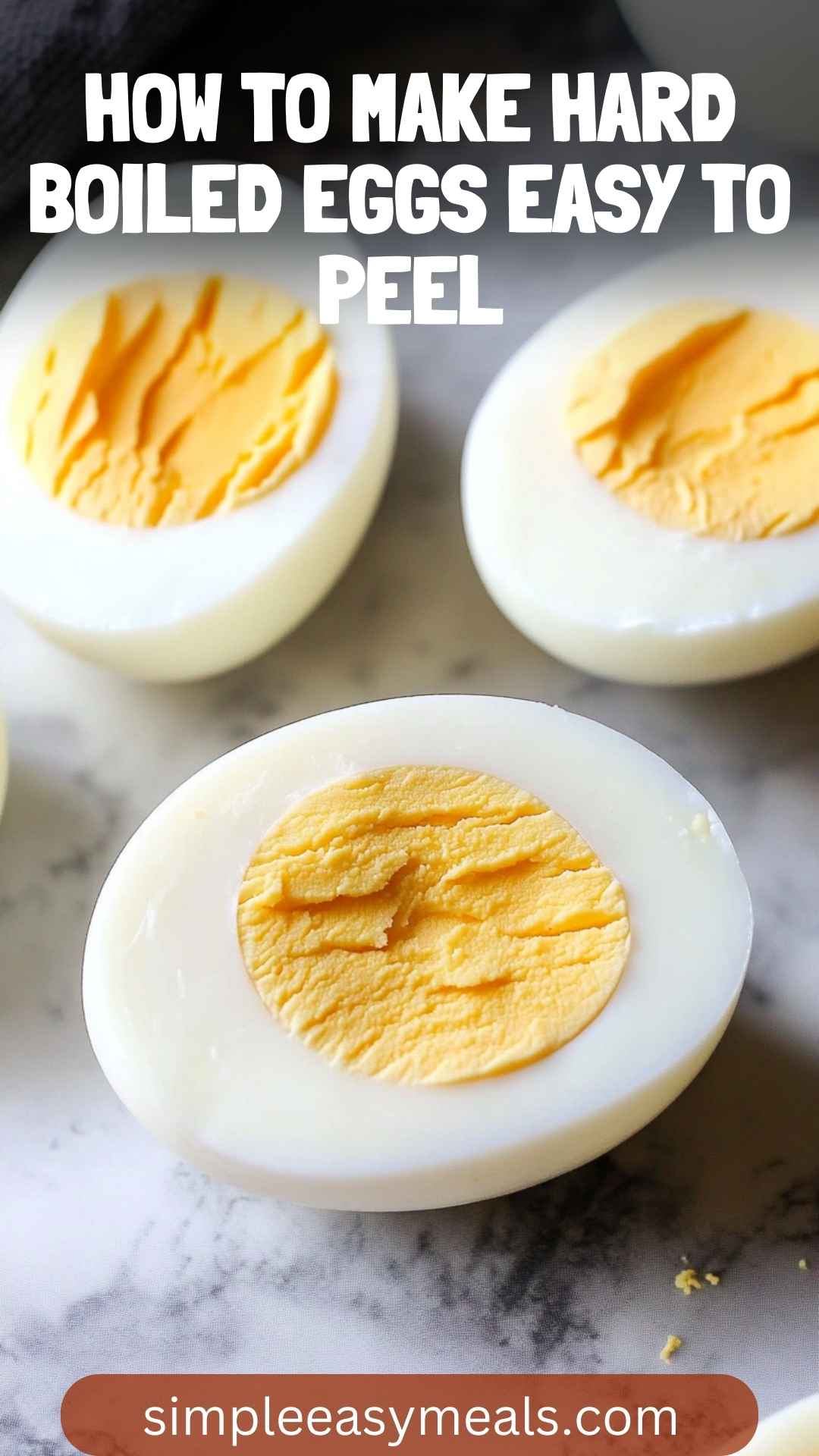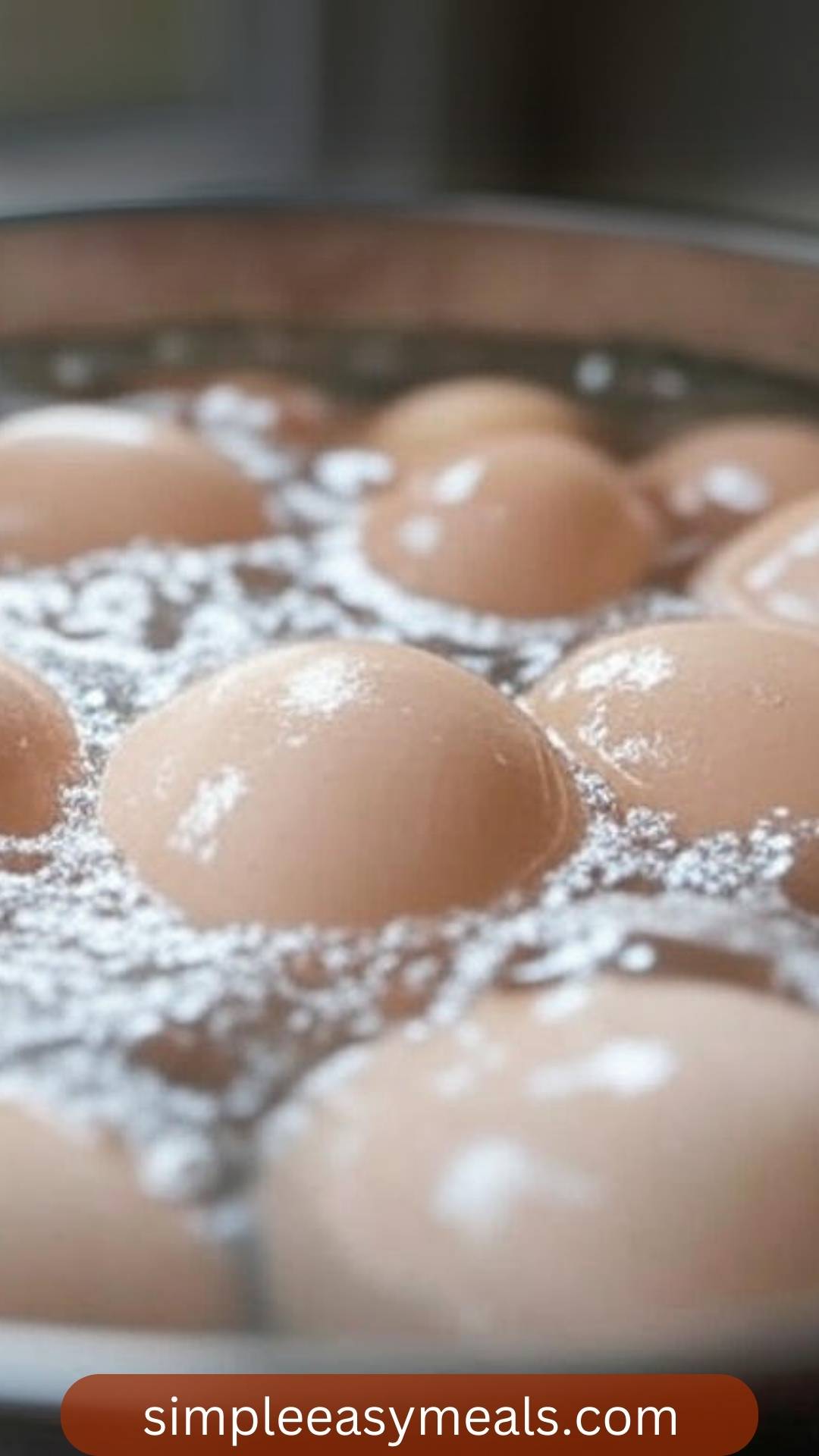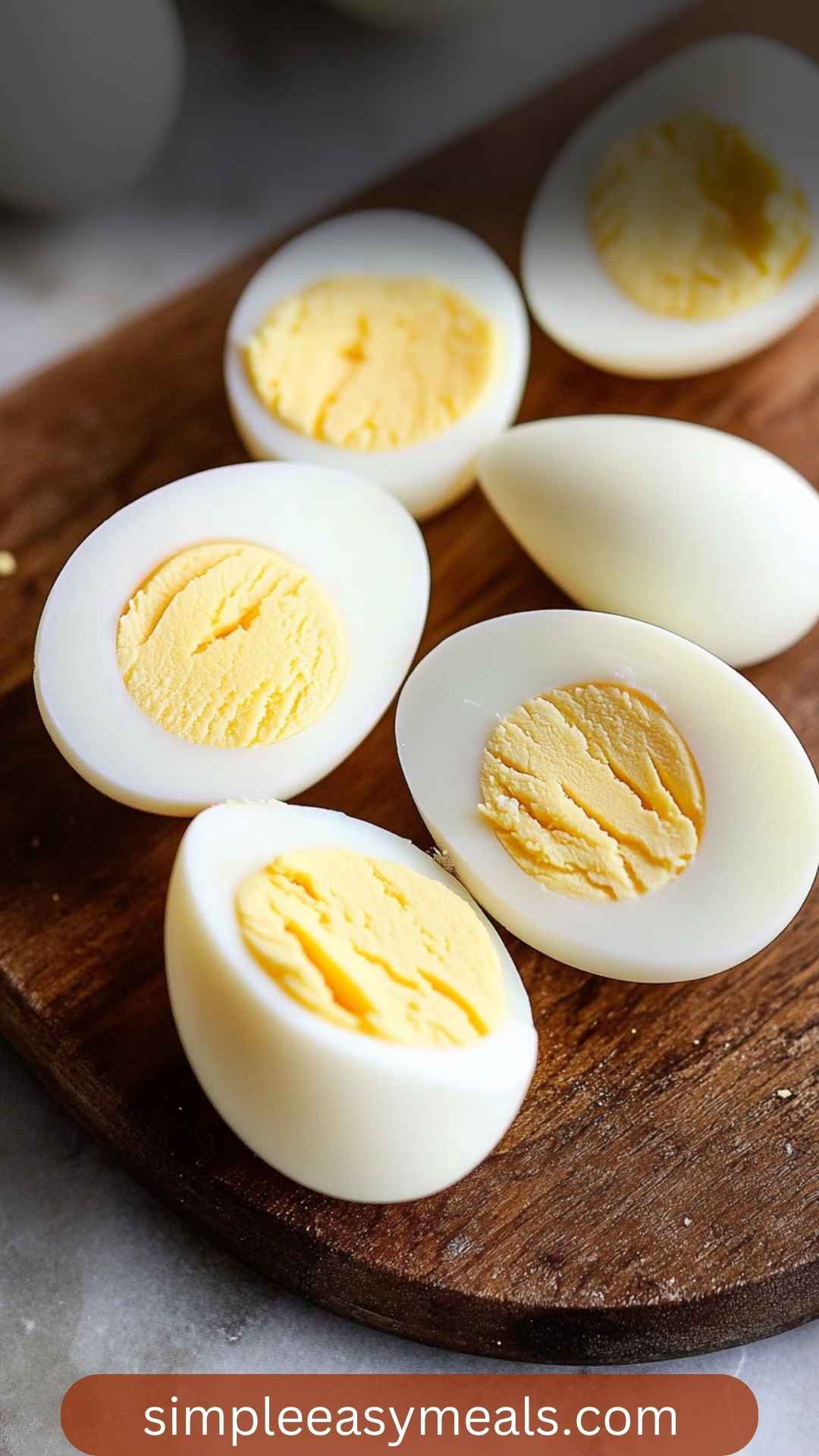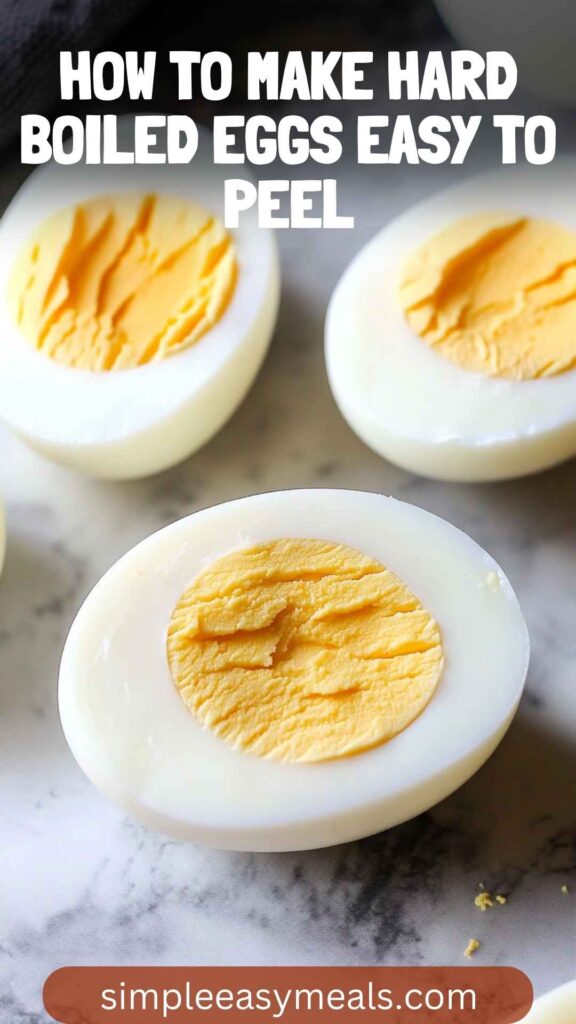Hard-boiled eggs are versatile delights that can elevate your meals and snacks. They harmonize beautifully with a variety of dishes. Picture this: a fresh garden salad with a dash of olive oil, where the creamy yolks add richness to the greens.
Maybe you’re craving a bagel with cream cheese, topped with a couple of perfectly sliced eggs and a sprinkle of chives. Not to mention the classic egg salad sandwich, where hard-boiled eggs get all dressed up with mayonnaise and mustard. You can even toss them into a grain bowl, mixing them with quinoa, beans, or roasted veggies for a satisfying bite. Let’s not forget breakfast burritos! Just dice those eggs and throw them in with some cheese and salsa.
The list goes on. If you’ve got hard-boiled eggs in your fridge, you’ve got a friend in the kitchen.

What is “How to Make Hard-Boiled Eggs Easy to Peel?”
It might sound straightforward, but peeling hard-boiled eggs can sometimes feel like a puzzle. The goal here is simple: to cook the eggs in such a way that the shells slide off without a fuss.
The binding between the egg white and the shell can be stubborn. But with the right techniques, we can outsmart that stubbornness.
The journey to perfect hard-boiled eggs starts from selecting the right eggs to using effective cooking and cooling methods. By understanding the science behind egg shells, you can master the art of peeling.
Why You’ll Love These Hard-Boiled Eggs
Let’s talk about the love we all have for a perfectly cooked hard-boiled egg. Imagine slicing into a still-warm egg, revealing that bright, golden yolk.
The texture is creamy, the flavor is mild, and the possibilities are endless—from adding them to salads to enjoying them as a quick protein-packed snack.
Making hard-boiled eggs that are easy to peel isn’t just a cooking hack; it’s a game-changer. You’ll save time, reduce waste (no more egg whites stuck to the shell), and impress anyone you serve.
Plus, these eggs are an excellent source of protein and nutrients like vitamin D and choline, contributing positively to your health.
Ingredients You Will Need to Make Hard-Boiled Eggs
Here’s what you’ll need for this egg-straordinary endeavor:
- A pinch of salt
- 1 teaspoon of white vinegar
- 1 to 6 large fresh eggs

Directions to Make Hard-Boiled Eggs Easy to Peel
Now let’s dive into the process. Take a deep breath; it’s easier than it seems!
Step 1: Prepare the Eggs
Start by selecting the best eggs you can find. Take them out of the fridge at least 10 minutes before cooking. Letting them sit at room temperature can help reduce the shock when they meet the boiling water.
Step 2: Boil Water in a Pot
Choose a pot large enough to hold all the eggs in a single layer. Fill it with water, and add a pinch of salt and vinegar. The salt helps keep the shells intact if they crack. Place the pot on the stove and bring the water to a rolling boil.
Step 3: Gently Add Eggs
Once the water is bubbling fiercely, carefully add the eggs using a spoon. Lower the heat slightly to a gentle boil. Cooking the eggs at a lower temperature can help prevent rubbery textures.
Step 4: Adjust Cooking Time
Here lies the secret: cooking time varies based on how you like your yolks! For soft to medium-boiled eggs, aim for 6-8 minutes. For hard-boiled ones, shoot for 9-12 minutes. Personally, I prefer about 10 minutes for a beautifully set yolk.
Step 5: Prepare an Ice Bath
While the eggs cook, fill a bowl with ice and cold water. This ice bath halts the cooking process and makes peeling easier.
Step 6: Transfer Eggs to Ice Bath
When the timer goes off, use a slotted spoon to transfer the eggs into the icy water. Let them sit for about 5-10 minutes. This cooling phase does wonders for the shell.
Step 7: Peel and Enjoy
Once the eggs are cool, gently tap them on a hard surface, rolling them to crack the shell. Start peeling from the wider end; that is often where the air pocket is. Rinse the peeled eggs under cold water to remove any shell remnants.
Notes: Five Tips for Perfectly Peeled Eggs
- Opt for Older Eggs: Fresh eggs are harder to peel. If you can, use eggs that are 1-2 weeks old.
- Don’t Skip the Ice Bath: This really helps separate the egg white from the shell.
- Vinegar or Baking Soda: Adding vinegar or even a pinch of baking soda to the water can raise the pH and make peeling easier.
- Crack, Roll, and Peel: The rolling method can be a fun activity and really works wonders to loosen the shell.
- Experiment with Cooking Times: Don’t be afraid to find your perfect balance. Everyone’s stove and pot are different; adjust until you get it just right!
Storage Tips
Once you’ve mastered the art of boiling and peeling eggs, you might wonder how to store them. Here are recommendations:
- Keep Them Refrigerated: Place the unpeeled eggs in the fridge. They’ll stay fresh for about a week.
- Use Moisture-Resistant Containers: Store them in a breathable container to avoid excess moisture that can lead to spoilage.
- Label and Date: Always label cooked eggs with the date so you can keep track of freshness.
Serving Suggestions
Looking for inspiration on how to incorporate your beautiful hard-boiled eggs? Here are some ideas:
- Egg Salad Sandwich: Mix chopped eggs with mayonnaise, mustard, and your favorite seasonings. Serve it on bread or lettuce wraps for a low-carb choice.
- Deviled Eggs: Halve the eggs and mix the yolks with mayo, mustard, and a dash of paprika for a delightful snack or appetizer.
- Cobb Salad: Slice hard-boiled eggs to top a classic Cobb salad with avocado, bacon, and bleu cheese for a satisfying meal.
- Breakfast Bowl: Add sliced hard-boiled eggs to a grain bowl with quinoa or brown rice, topped with roasted vegetables and your choice of dressing.
- Spicy Egg Curry: Incorporate hard-boiled eggs into a flavorful Indian curry.
What Other Substitutes Can I Use in Hard-Boiled Eggs?
You might be wondering about variations. Here are alternatives you can explore:
- Quail Eggs: These tiny treasures are fantastic for hors d’oeuvres. Use the same boiling method but adjust the time for cooking—about 4-5 minutes.
- Duck Eggs: Richer in flavor and larger in size, duck eggs can be used the same way. Just be mindful of their larger yolks.
- Tofu: For a vegetarian option, you can use tofu to create a faux egg salad, mixing mashed tofu with similar seasonings.
- Egg Whites Only: If you want a lower-fat option, you can boil just the egg whites. These can also be seasoned and enjoyed on their own.
- Cottage Cheese: Use it in salads or breakfast bowls; it provides similar protein benefits without using eggs.

Conclusion
In the end, learning how to make hard-boiled eggs easy to peel is a feat worth mastering. Not only do these eggs make for a quick, protein-rich snack, but they are also key players in many delightful recipes.
With a little understanding, some tried-and-true methods, and a pinch of patience, you will have beautifully boiled and easy-to-peel eggs ready for any meal. Whether you’re a beginner or an experienced cook, perfecting this dish can enrich your culinary routine.
So, gather your eggs, fire up that stove, and let’s get peeling! Who knew something so simple could be so enjoyable?
You’ll also like the following recipes!
- Homemade Pasta Copycat Recipe Without Machine
- How to Make Simple Gnocchi
- Best Pappardelle Pasta Recipe with Chicken
How To Make Hard Boiled Eggs Easy To Peel – Simple Easy Meals
I remember my first encounter with hard-boiled eggs. I was about ten years old, scrambling to make breakfast for myself after a sleepover at my friend’s house. The eggs went into the pot, I set the timer, and waited.
However, when I cracked one open, it looked like a scene from a horror movie—the shell clung to the egg white as if it was the best of friends. What a messy affair that was! Since then, I've made it my mission to crack the code on how to make hard-boiled eggs easy to peel.
Through years of trial and error, I discovered some simple methods that might surprise you. On top of that, I've dug into some research, talked to other cooks, and learned a thing or two that I can’t wait to share.

Ingredients
Instructions
Step 1: Prepare the Eggs
-
Start by selecting the best eggs you can find. Take them out of the fridge at least 10 minutes before cooking. Letting them sit at room temperature can help reduce the shock when they meet the boiling water.
Step 2: Boil Water in a Pot
-
Choose a pot large enough to hold all the eggs in a single layer. Fill it with water, and add a pinch of salt and vinegar. The salt helps keep the shells intact if they crack. Place the pot on the stove and bring the water to a rolling boil.
Step 3: Gently Add Eggs
-
Once the water is bubbling fiercely, carefully add the eggs using a spoon. Lower the heat slightly to a gentle boil. Cooking the eggs at a lower temperature can help prevent rubbery textures.
Step 4: Adjust Cooking Time
-
Here lies the secret: cooking time varies based on how you like your yolks! For soft to medium-boiled eggs, aim for 6-8 minutes. For hard-boiled ones, shoot for 9-12 minutes. Personally, I prefer about 10 minutes for a beautifully set yolk.
Step 5: Prepare an Ice Bath
-
While the eggs cook, fill a bowl with ice and cold water. This ice bath halts the cooking process and makes peeling easier.
Step 6: Transfer Eggs to Ice Bath
-
When the timer goes off, use a slotted spoon to transfer the eggs into the icy water. Let them sit for about 5-10 minutes. This cooling phase does wonders for the shell.
Step 7: Peel and Enjoy
-
Once the eggs are cool, gently tap them on a hard surface, rolling them to crack the shell. Start peeling from the wider end; that is often where the air pocket is. Rinse the peeled eggs under cold water to remove any shell remnants.
Nutrition Facts
Servings 6
- Amount Per Serving
- Calories 70kcal
- % Daily Value *
- Total Fat 5.1g8%
- Saturated Fat 1.3g7%
- Cholesterol 112mg38%
- Sodium 135mg6%
- Total Carbohydrate 2g1%
- Sugars 1g
- Protein 4g8%
* Percent Daily Values are based on a 2,000 calorie diet. Your daily value may be higher or lower depending on your calorie needs.
Note
- Opt for Older Eggs: Fresh eggs are harder to peel. If you can, use eggs that are 1-2 weeks old.
- Don’t Skip the Ice Bath: This really helps separate the egg white from the shell.
- Vinegar or Baking Soda: Adding vinegar or even a pinch of baking soda to the water can raise the pH and make peeling easier.
- Crack, Roll, and Peel: The rolling method can be a fun activity and really works wonders to loosen the shell.
- Experiment with Cooking Times: Don’t be afraid to find your perfect balance. Everyone’s stove and pot are different; adjust until you get it just right!





